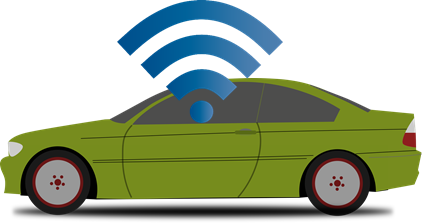What Makes a Digital Car Digital?
August 13, 2018
Television has had a long fascination with the concept of intelligent automobiles. The 1965 to 1966 series “My Mother the Car” portrayed the travails of a hapless family man who discovers that his mother has been reincarnated as his wisecracking 1928 Porter automobile. In 2002, TV Guide named the series the second-worst television show of all time [source: AP].
While that series may have failed, interest in cars that are smarter than their drivers didn’t wane. The 1980s TV series “Knight Rider” perhaps came closest to what viewers wanted in an intelligent car. Rather than being possessed by a reincarnated soul, this car, K.I.T.T. (Knight Industries Two Thousand), was controlled by high-tech computerization. With undercover agent Michael Knight behind the steering wheel, K.I.T.T. provided support for him week after week as Knight apprehended bad guys. K.I.T.T., was not only capable of high speeds — it was armed with flame throwers and could navigate out of dangerous situations. In 1982, K.I.T.T. was the pinnacle of high-tech.
Soon, the computer age brought new breakthroughs in digital technology. With the advent of wireless communication and compressed data storage, what was once limited to the imaginations of TV writers became available for general consumption. You would be hard-pressed to find a car on a dealer’s lot equipped with flame throwers, sure. But there is a lot of other K.I.T.T. features in cars today. Automobiles have zoomed into the digital age.
What exactly makes a digital car digital? Intelligence. New features have transformed the car from a mere vessel that transports you from point A to point B — now, cars get you there easily, safely and even keep you entertained along the way. Cars have come to resemble computers on wheels. There are now cars manufactured with built-in hard drives [source: Detroit News].
So what makes an intelligent car intelligent? There is the Smart Car, but that name refers to the buyer’s decision to choose a fuel-efficient, low-emissions car rather than any digital aspect. To create a truly intelligent car, auto engineers have focused on ways to manufacture automobiles that use computer-based solutions as answers to problems that have been around since cars were invented — like danger and boredom. The high-tech gadgetry in today’s most digitized cars centers around two main categories: safety and entertainment.
The development of fast cars has outpaced safety technology. It was not until 1966 that federal law required seat-belts to be installed on all new vehicles manufactured in the United States [source: Prevention Institute]. Airbags were not introduced as a standard feature on most cars until the 1990s [source: Esurance]. Yet, engine design has produced faster, more powerful vehicles at a breakneck pace.
With digital cars, the goal is to not only protect a car’s occupants in an accident but also to prevent collisions altogether. These systems are called pre-collision systems.
In the highest-end pre-collision systems cameras look for traffic up ahead, and another camera mounted in the steering wheel analyzes your face for attentiveness to oncoming obstacles. If the integrated computer determines that a collision may occur before you have a chance to respond, the car will brake for you [source: Consumer Reports].
Knowing what you are about to collide with before you even see it is definitely digital. The use of infrared night vision technology was first introduced in 2000. The night vision looked beyond the headlights, displaying images on a dashboard screen for the driver. The equipment extended reaction time for night driving at 60 miles per hour from 3.5 seconds to a full 15 seconds [source: New York Times].
Next-generation infrared sensors detect heat hundreds of feet ahead of the car– be it a person, deer or another car — and digitally display the images on the windshield [source: Consumer Reports].
This technology also comes in handy for blind spots. Some cars of the digital age offer blind spot detection systems. These use cameras and infrared sensors, usually mounted on the cars side view mirrors, to keep an eye on the cars you can not see. Signals mounted within sight to the side view mirrors flash when a car enters your blind spot [Seattle Times].
Digital cars are designed to do more than get you home safely. They are also keeping drivers entertained and connected. A large percentage of cars have I-pod docks, DVD players and video game consoles. Next commonplace is built-in mobile wi-fi for cars.
Clark, Josh. “What makes a digital car digital?”. Retrieved from https://auto.howstuffworks.com/under-the-hood/trends-innovations/digital-car2.htm.
